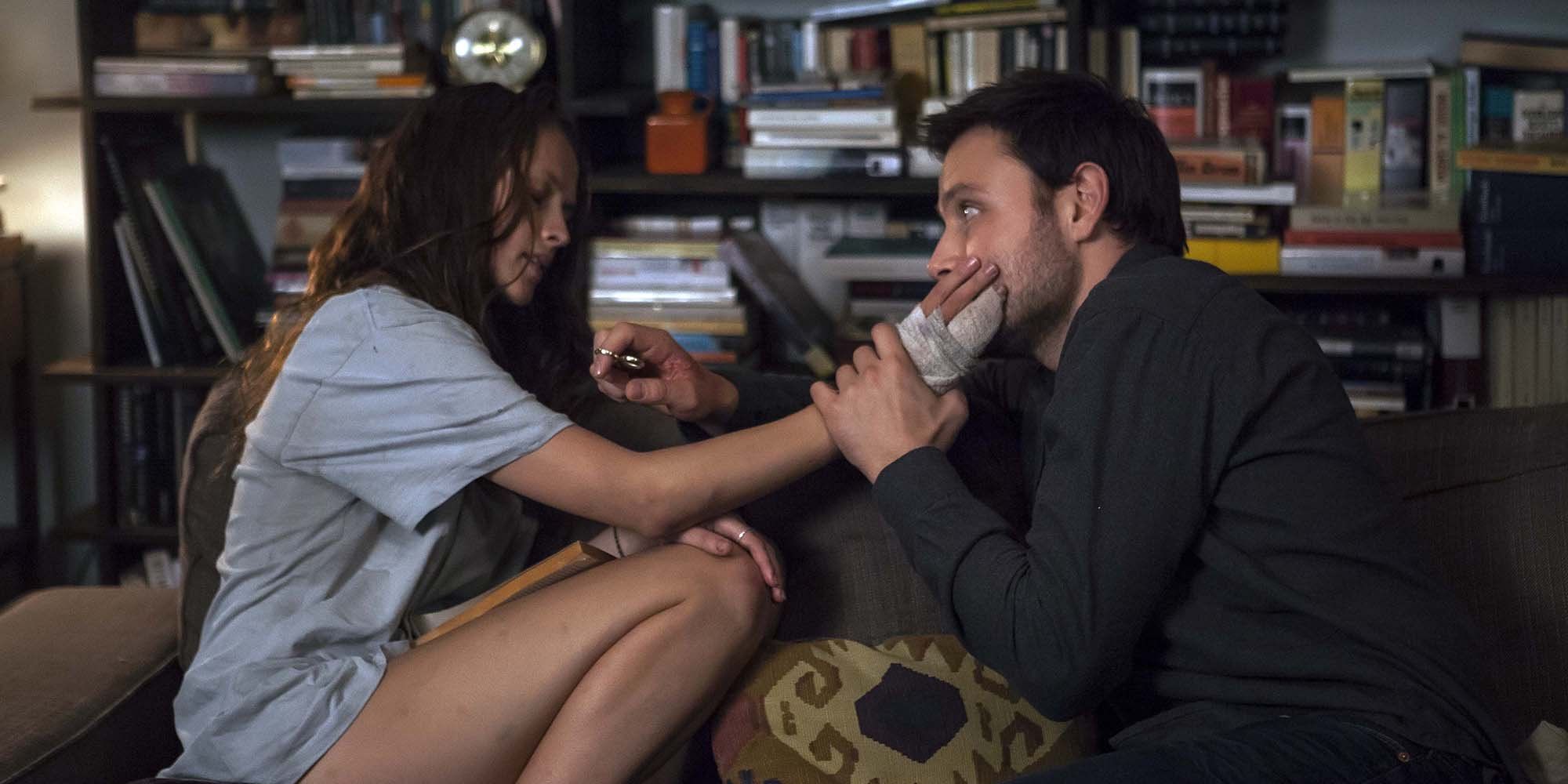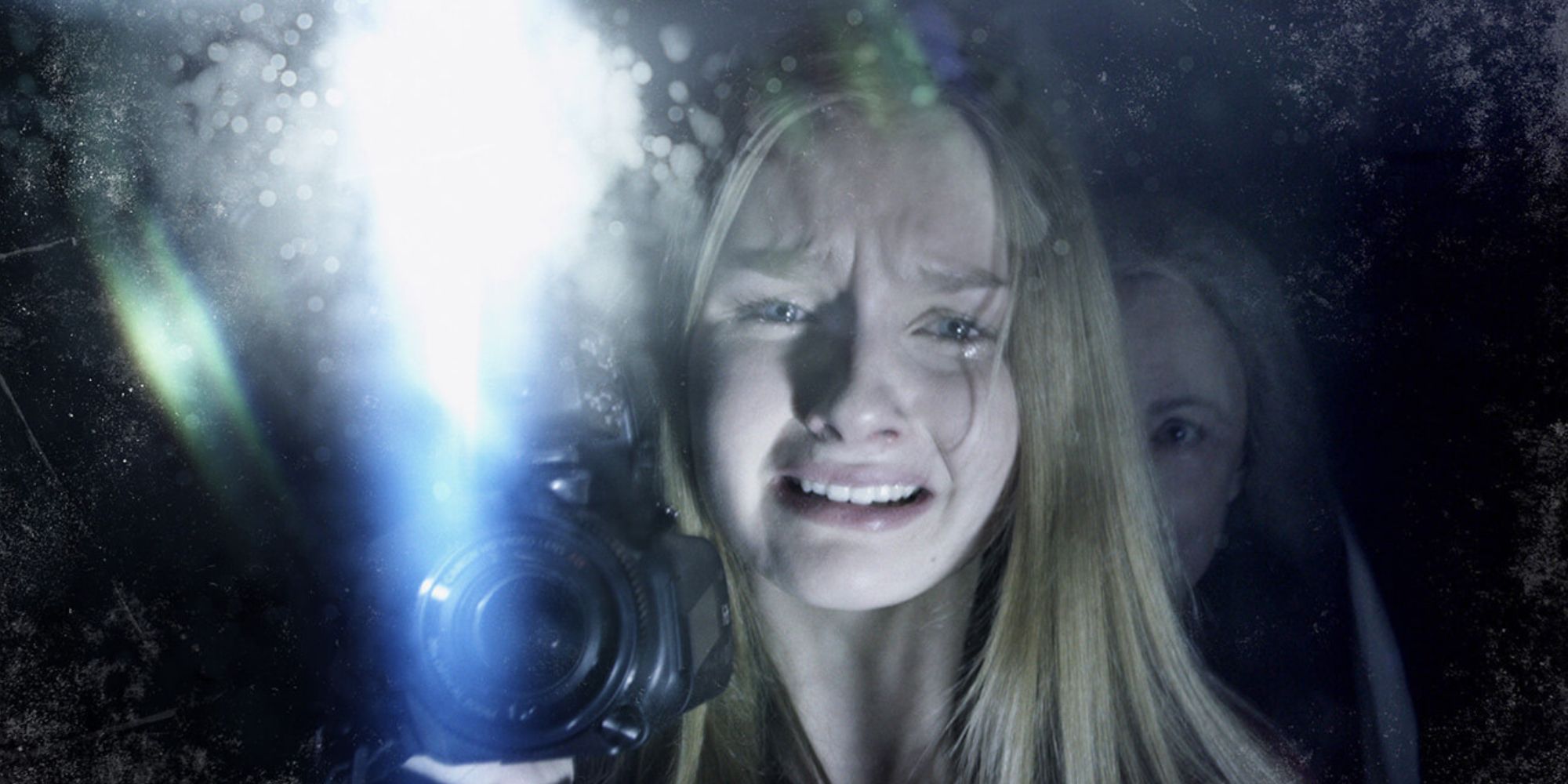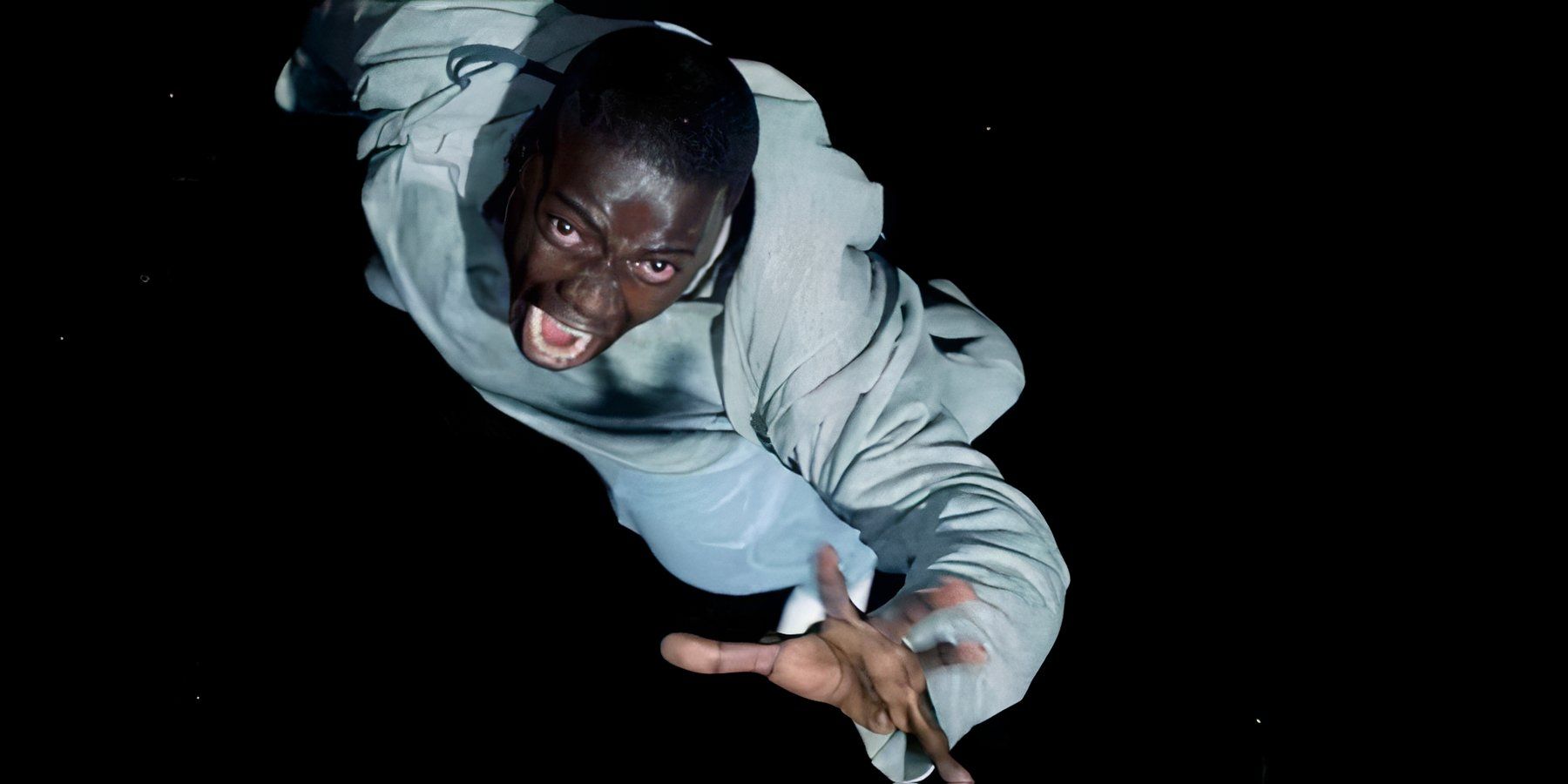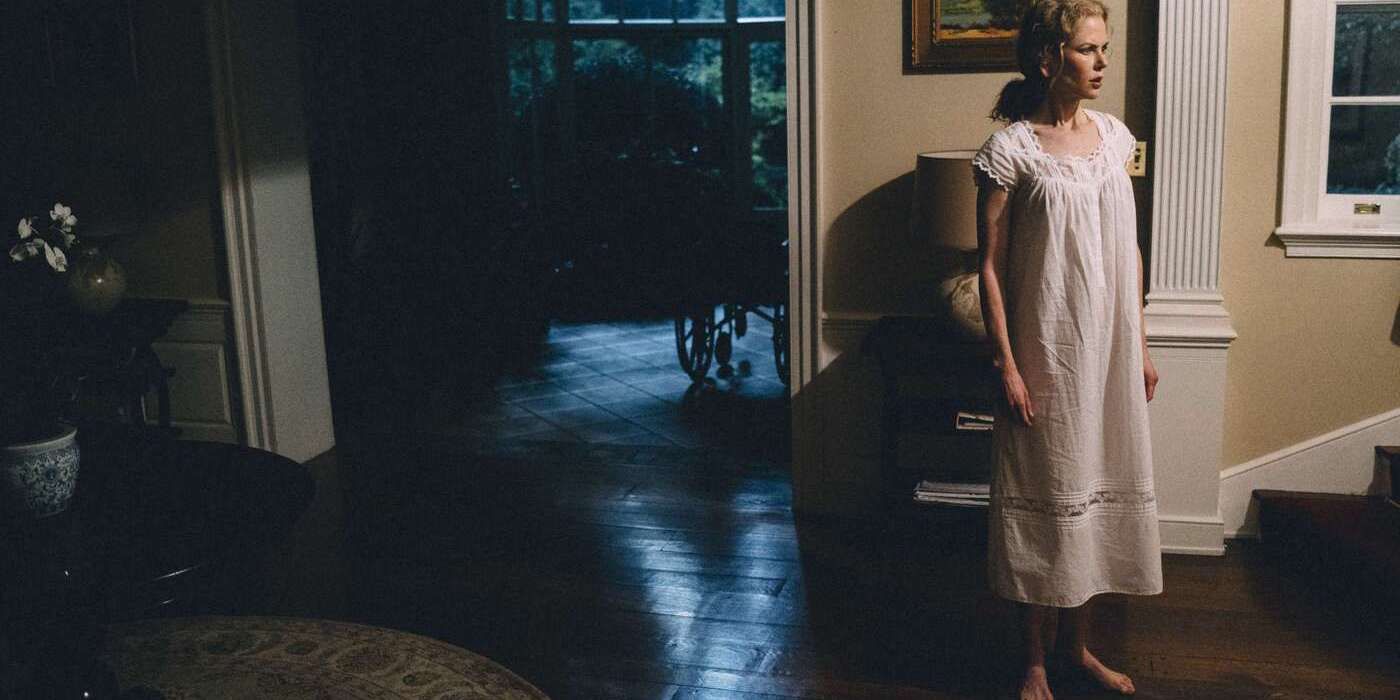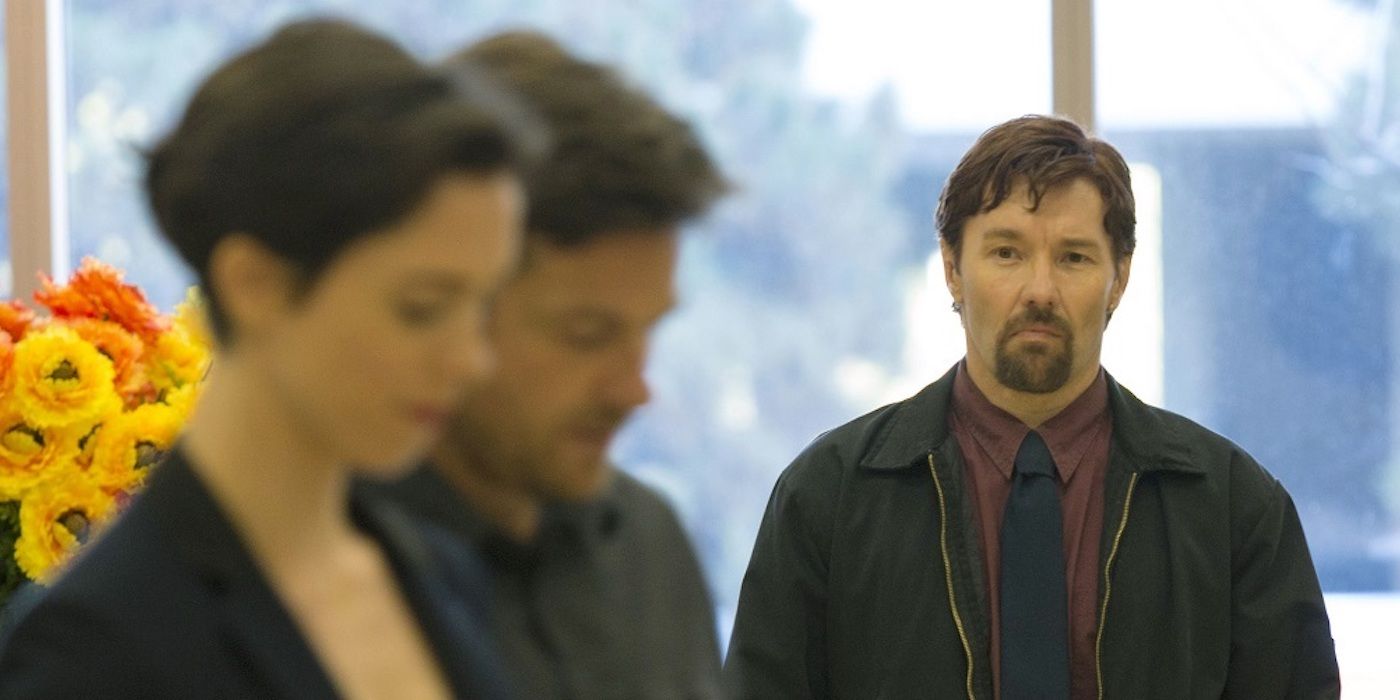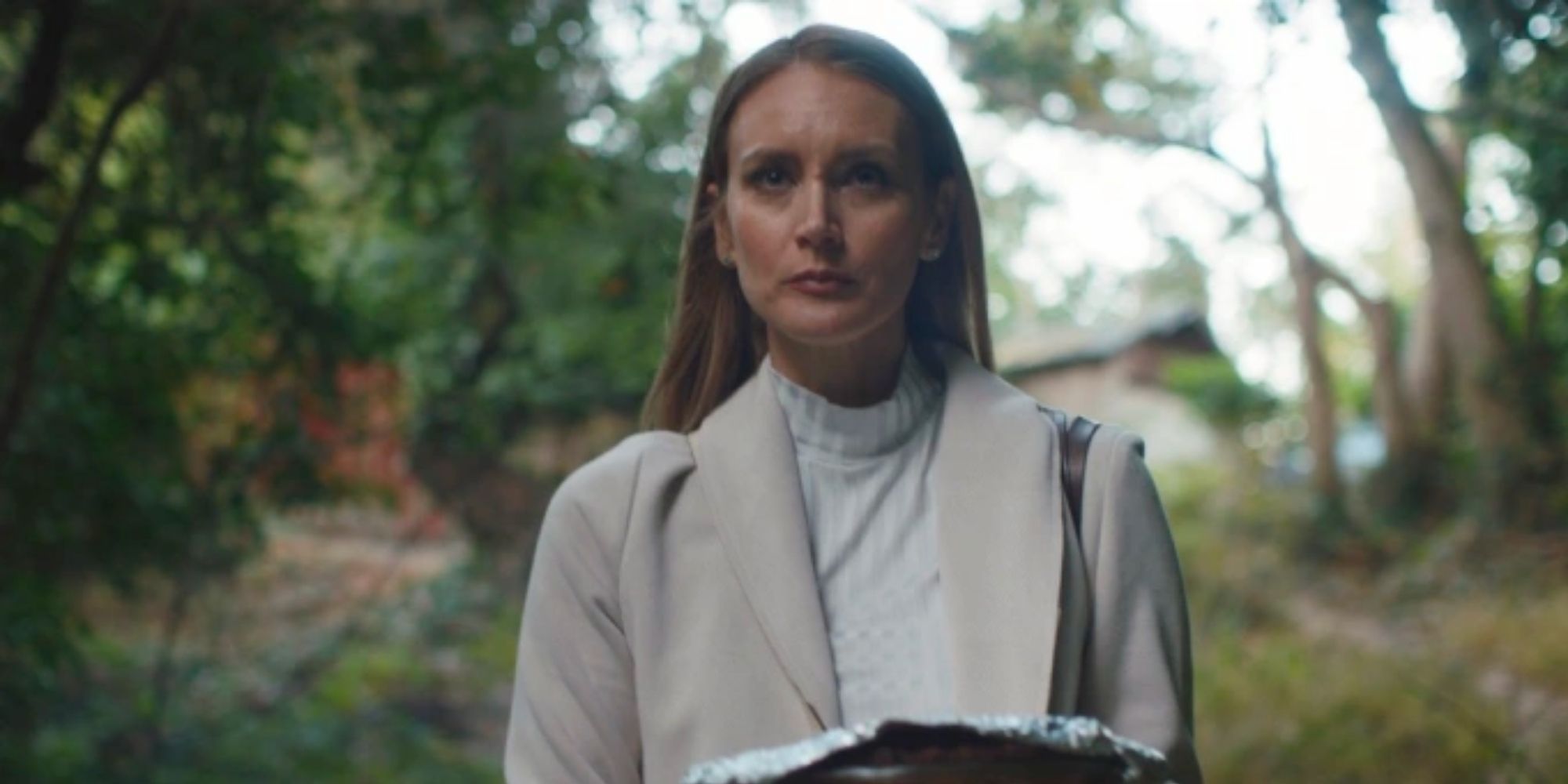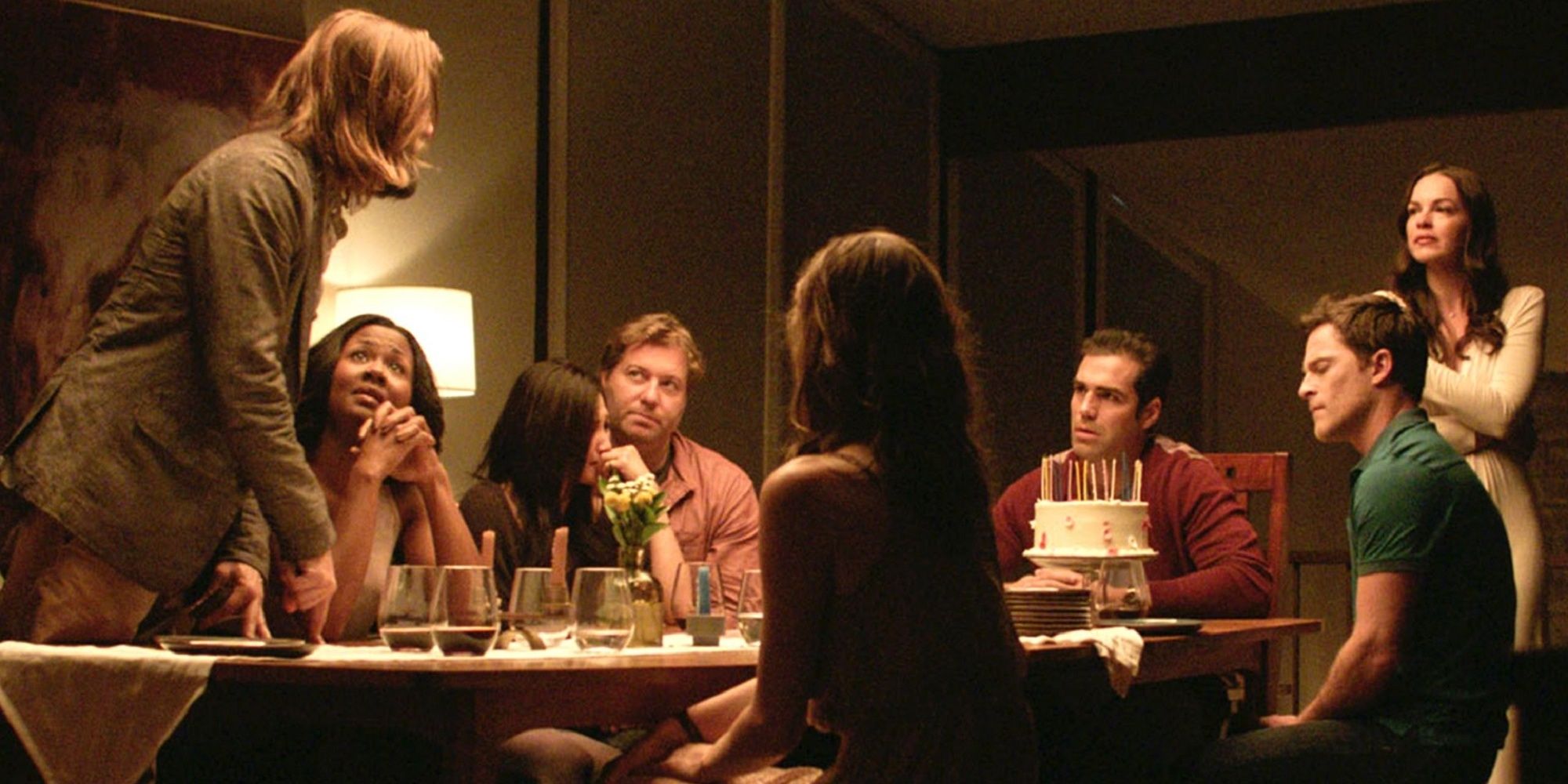If Speak No Evil left you with a sense of unease and dread, you’re not alone. The movie follows an American couple who, after befriending another family on vacation, accept an invitation to visit them at their remote home. What starts as a seemingly pleasant visit soon turns unsettling, as subtle oddities evolve into a horrifying experience. The couple becomes trapped in a nightmare, forced to confront their own limits of politeness and fear as the situation spirals out of control. Being an American remake of the original Danish movie makes watching the original necessary.
However, if you’re looking to dive deeper into unsettling narratives that linger long after the credits roll beyond Speak No Evil, there are plenty of other movies that will give you that same sense of discomfort. From the haunting, claustrophobic terror of Barbarian to the eerie social commentary of Get Out, each movie on this list explores fear in unique and provocative ways.
Watch in Cinemas
10 ‘Barbarian’ (2022)
Directed by Zach Cregger
Barbarian follows Tess (Georgina Campbell), who arrives at a rental home in a rundown Detroit neighborhood for a job interview. Upon arrival, she discovers that the house has been double-booked, and a man named Keith (Bill Skarsgård) is already staying there. Despite her initial unease, Tess decides to stay the night. However, when she explores the basement later, Tess uncovers a horrifying secret hidden beneath the house. As the danger escalates, Tess becomes entangled in a nightmare with a horrifying presence lurking within.
Barbarian shares many thematic similarities with Speak No Evil. Both movies revolve around protagonists who unknowingly walk into dangerous situations while staying in unfamiliar houses, only to discover something far more sinister beneath the surface. The unpredictability of the threats in both movies highlights the immense danger the protagonists are in and their initial helplessness. Additionally, Barbarian and Speak No Evil both build up dread at a slower pace that unravels the darkness little by little, making the horror more terrifying.
9 ‘Midsommar’ (2019)
Directed by Ari Aster
Midsommar follows Dani (Florence Pugh), who is grieving the tragic loss of her family. To cope, she joins her boyfriend Christian (Jack Reynor) and his friends on a trip to a remote Swedish village for a rare midsummer festival. What begins as a seemingly peaceful retreat soon takes a dark turn as the group becomes entangled in the village’s disturbing and violent pagan rituals. As tensions rise and secrets are revealed, Dani finds herself drawn deeper into the sinister traditions of the cult, forcing her to confront her relationship with Christian and the unsettling events unfolding around her.
Midsommar revolves around Dani, Christian, and his friend group, who are lured into the midsummer festival in Sweden without knowing its true sinister nature. Similarly, in Speak No Evil, Louise (Mackenzie Davis) and Ben (Scoot McNairy) go to a family dinner that seems normal on the surface but hides a more sinister nature. Isolation is an overarching theme in both movies as well. Speak No Evil places its characters in an isolated home with hosts that mask evil intentions, while Midsommar does the same within a seemingly idyllic Swedish village with a cult with ulterior motives, leading to the protagonists realizing too late that they are trapped in situations they cannot escape.
8 ‘Berlin Syndrome’ (2017)
Directed by Cate Shortland
Berlin Syndrome follows Clare (Teresa Palmer), an Australian photographer traveling in Berlin, where she meets a charming local man named Andi (Max Riemelt). After spending the night together, Clare wakes up to find herself locked in his apartment. Initially, she believes it was an accident, but as days go by, she realizes that Andi has no intention of letting her leave. As Clare struggles to survive, she must outwit Andi while grappling with the psychological trauma of being held captive.
Berlin Syndrome is Teresa Palmer’s best movie to date as she gives a spectacular performance, enticing dread into the hearts of viewers as the helpless Clare. Berlin Syndrome and Speak No Evil share similar psychological horror elements that revolve around the trust of the protagonists being abused. In both movies, the protagonists enter situations where they are isolated with seemingly normal individuals, only to discover that they are in grave danger. The antagonists in both movies hide their sinister truths under their charm, fooling the audience and the protagonists alike at first before revealing their dark intentions.
7 ‘The Visit’ (2015)
Directed by M. Night Shyamalan
The Visit is an underrated M. Nigh Shyamalan found footage gem. The movie follows Becca (Olivia DeJonge) and Tyler (Ed Oxenbould), two siblings who travel to rural Pennsylvania to spend five days with their estranged grandparents, whom they have never met before. At first, their visit seems normal, but the children soon notice strange and disturbing behavior from their grandparents, particularly at night. As their stay progresses, the siblings become increasingly alarmed, realizing something is seriously wrong. Becca and Tyler must uncover the terrifying truth behind their grandparents’ odd actions and try to escape before it’s too late.
The Visit and Speak No Evil share a somewhat similar premise. In both movies, protagonists visit unfamiliar homes expecting a pleasant stay, only to face disturbing behavior from their hosts. The horror in The Visit and Speak No Evil is very claustrophobic as the characters are trapped in remote rural houses with no place to run. Both movies have a lot of psychological horror elements as the protagonists start to gradually realize the gravity of the situations they are trapped in and the associated dangers.
Watch on Max
6 ‘Get Out’ (2017)
Directed by Jordan Peele
The best horror movie released in the 2010s, Get Out follows Chris (Daniel Kaluuya), a Black man who travels with his white girlfriend, Rose (Allison Williams), to meet her family for the first time. Initially, Chris notices subtle oddities in their behavior but brushes it off as awkwardness. However, as the weekend progresses, he uncovers a horrifying secret about Rose’s family, who have sinister plans involving hypnotism and a dangerous experiment. Chris must fight for his life as he realizes he is trapped in a terrifying, racially charged nightmare that preys on his identity and autonomy.
Get Out and Speak No Evil both present social commentary through the lens of psychological horror. In Get Out, the movie critiques racism and societal exploitation by placing Chris in a seemingly welcoming yet deeply sinister environment where he is preyed upon due to his race. Similarly, Speak No Evil addresses societal norms around politeness and boundaries, as the couple’s attempts to maintain peace with their tormentors only increase the violence. Social commentary through horror is not the only thing these movies share. On a more surface level, Chris, and Louise, and Ben are lured into dangerous traps under the disguise of a friendly invitation.
5 ‘The Killing of A Sacred Deer’ (2017)
Directed by Yorgos Lanthimos
The Killing of A Sacred Deer follows Steven (Colin Farrell), a successful heart surgeon who befriends a teenage boy named Martin (Barry Keoghan). Steven welcomes Martin into his family’s life, but things take a dark turn when Martin reveals his true intentions. Seeking revenge for his father’s death during surgery, Martin places a curse on Steven’s family, causing a mysterious illness to strike them. As the situation escalates, Steven must make an impossible choice to prevent further tragedy, testing his moral limits and unraveling his family.
In The Killing of A Sacred Deer, Steven starts a very innocent friendship with Martin without knowing that he is seeking revenge. Similarly, Louise and Ben in Speak No Evil strike a usual friendship with Paddy (James McAvoy) and Ciara (Aisling Franciosi) while on vacation. In both situations, the antagonists end up targeting their families. Both movies explore the idea of being forced into making impossible choices, while escalating horror builds through manipulation and social unease. The unsettling atmosphere in both movies underscores how vulnerability and trust can lead to devastating outcomes.
4 ‘The Gift’ (2015)
Directed by Joel Edgerton
The Gift follows Simon (Jason Bateman) and Robyn (Rebecca Hall), a married couple who move into a new home and unexpectedly reconnect with Gordo (Joel Edgerton), an old acquaintance from Simon’s past. Gordo begins leaving them mysterious gifts and making frequent visits, which makes Simon uncomfortable. As Gordo’s behavior becomes more intrusive, dark secrets from Simon’s past resurface, threatening the couple’s peace. Robyn starts to question her husband’s integrity and their relationship, leading to a psychological game of manipulation and revenge that upends their lives.
In the underrated The Gift, past actions resurface in disturbing and unexpected ways, while in Speak No Evil, new friendships end up becoming catastrophic consequences. In both movies, seemingly normal interactions gradually devolve into psychological horror as secrets are revealed and trust is manipulated. Both movies build their tension through psychological games that leave the protagonists and the audience questioning everything.
3 ‘Soft & Quiet’ (2022)
Directed by Beth de Araujo
The stomach-churning Soft & Quiet follows Emily (Stefanie Estes), an elementary school teacher who leads a meeting for a group of white supremacist women with extreme ideologies against immigrants, Jewish people, feminists, inclusion policies such as diversity quotas, and organizations such as Black Lives Matter. What begins as a seemingly ordinary gathering quickly spirals out of control as the group’s disturbing beliefs turn into violent actions. As the night progresses, their interactions lead to increasingly dangerous decisions that spiral toward a horrifying conclusion.
Soft & Quiet and Speak No Evil share a very tense atmosphere that starts from a seemingly normal social interaction that slowly turns into a horror show. Both movies explore how the characters’ disturbing behavior gets gradually worse and more violent over time. In Soft & Quiet, the group’s extremist beliefs lead to dangerous and violent consequences, while in Speak No Evil, Paddy and Ciara exploit the couple’s politeness to trap them in a deadly situation where violence keeps escalating. Both movies rely on a slower pace to build intense psychological horror to maximize the impact of their final act. Additionally, Soft & Quiet and Speak No Evil are both rooted in reality, which makes the violence and the horror so much more terrifying.
2 ‘Funny Games’ (2007)
Directed by Michael Haneke
Funny Games tells the story of Anna (Naomi Watts) and George (Tim Roth), a couple who take their son, Georgie (Devon Gearhart), to their vacation home for a relaxing weekend. Their peaceful retreat is shattered when two young men, Peter (Brady Corbet) and Paul (Michael Pitt), arrive at the house, posing as friendly neighbors. As the day progresses, their behavior turns increasingly disturbing, and they reveal their sadistic intentions. The family’s attempts to escape or seek help are thwarted by the intruders, leading to a tense and horrifying ordeal that forces Anna and George to confront their own helplessness in the face of unrelenting cruelty.
Funny Games is the English language remake of Michael Haneke‘s Austrian 1997 movie of the same title. Contrary to Speak No Evil, Funny Games stick to the original movie as it is a shot-for-shot remake. Funny Games features a family whose vacation is disrupted by two sadistic strangers, creating a claustrophobic atmosphere of dread and helplessness inside their vacation home. Similarly, Speak No Evil portrays a seemingly normal family dinner that devolves into a horrifying ordeal. Both movies exploit the unsettling juxtaposition of normalcy and horror, where the threat emerges from within a facade of civility. Anna in Funny Games deems it impolite to ask her guests, who overstayed their welcome, to leave, while Louise and Ben in Speak No Evil find it impolite to leave the dinner even after bizarre things happen, and both situations end up devastating for their families.
Rent on Amazon
1 ‘The Invitation’ (2015)
Directed by Karyn Kusama
The Invitation follows Will (Logan Marshall-Green) and his girlfriend, Kira (Emayatzy Corinealdi), who attends a dinner party hosted by Will’s ex-wife Eden (Tammy Blanchard) and her new husband, David (Michiel Huisman), at their secluded home. Will, still grappling with the tragic loss of his son and a strained relationship with Eden, is uneasy about the gathering. As the evening progresses, Will begins to suspect that Eden and David’s intentions might be more sinister than they initially appear. His suspicions grow as strange and unsettling events unfold, threatening the safety of everyone at the party.
The Invitation and Speak No Evil also share a similar premise with an innocent invitation for dinner having ulterior motives. In The Invitation, Will’s discomfort and growing paranoia mirror the experience of Louisa and Ben in Speak No Evil. Both movies craft a sense of dread by placing normal settings in the heart of horror and turning an everyday situation into the backdrop of terror. The central theme of trust being manipulated into danger is evident in both, showcasing how civility can be used to hide true evil intentions. Both movies follow their protagonists in their desperate tries to survive.



